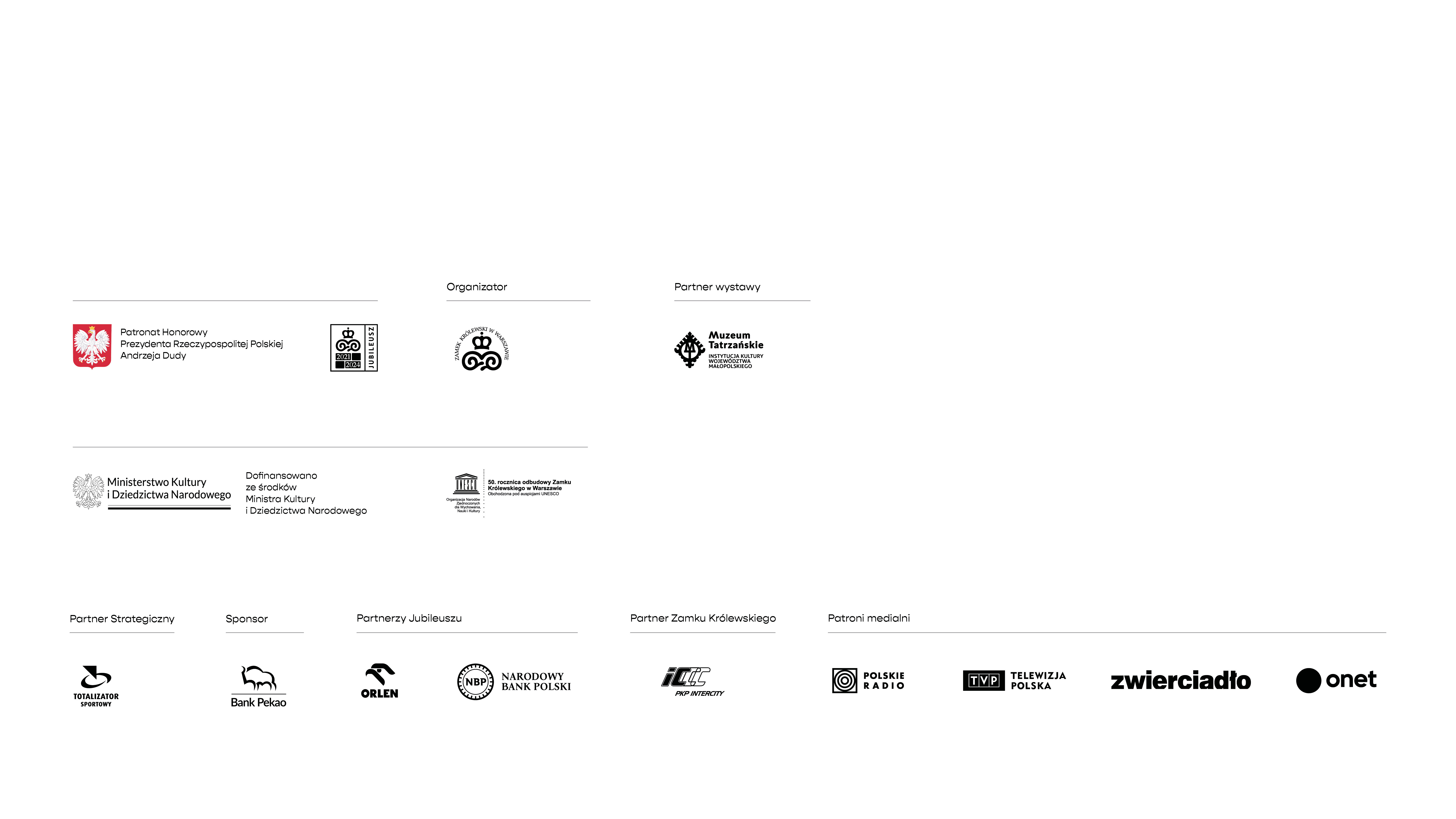Hasior. The Persistence of Experience
14 June – 15 September 2024
The Royal Library
(entry from the Tin Roofed Palace's Courtyard)
A contemporary classic. Avant-garde, but not elitist. An artist following his very own creative path, but harnessing energy from common experience as if he were a shaman. Awe-inspiring, but also violently opposed. A man not afraid to combine the opposing elements. His works constitute an eloquent testimony to the existential experiences and artistic explorations of the 20th century, but also a message that stays alive to this day, strongly resonating with current cultural trends. A message the timelessness of which derives not from the material durability of things, but from the everlasting impact it has on its recipients. We invite you to an exhibition no one may pass indifferently by.
The exhibition comprises the most outstanding from among Władysław Hasior’s currently available works, on loan from Polish museums and private collections. His artistic explorations have been displayed in the broadest scope possible in terms of both the form and the content. The themes of the works selected reflect generational traumas (including those brought upon by the wars), mechanisms of social oppression, relations between man and nature, the individual and the mass, the sacred and the profane, that which remains universal and that which passes locally, creating a fascinating and profound discourse on human condition, yet at the same time drawing from the most significant cultural texts. Whether an assemblage, a banner or a concrete sculpture cast in the ground – all these forms of expression so characteristic of the artist have found their way to represent his very own body of work.
Hasior’s areas of artistic interest often overlapped with topics currently highlighted by the mainstream philosophical, social and political discourses, such as ecology (an attempt to transcend the anthropocentric perspective) or the folk roots of the Polish community.
Władysław Hasior’s works speak their own language. By making non-obvious but thoughtful juxtapositions of material objects, ready-made or slightly processed, he gave them secondary meanings, weaving them into overarching semantic constellations. Significant here is not only the object itself, but also its shape, colour and all the characteristics of the material from which it was made. The artist’s gesture enabled the migration of meanings and bold re-evaluations: the seemingly insignificant becomes essential, the worthless becomes valuable, the temporary becomes eternal, the invisible is exposed and the familiar turns foreign.
Hasior allowed some randomness to play an important role in the process of creating a sculptural form from scratch, with the results achieved oftentimes becoming either a surprise or a discovery for the artist himself. Despite the momentum of his ventures, however, he did not at all pretend to be a demiurge exercising full control over the creative process. More importantly, his works seek a dialogue with the museumgoer, allowing natural factors, for instance in the form of an element, to make themselves known. The ethical dimension of such an attitude truly does resonate with our contemporary sensibilities, which is also why Władysław Hasior doubtless needs to be counted among the artists forever worth rediscovering.
The exhibition has been organised as part of the 50th anniversary of the reconstruction of the Royal Castle in Warsaw and symbolically refers to an exhibition of Władysław Hasior’s works that 50 years ago took place within the walls of the Castle still waiting to be rebuilt.
Opening hours:
Tuesday–Sunday: 12.00 noon – 8 PM (last entry at 7 PM)
Ticket prices:
Tickets available at the stationary ticket office (10.00 AM–5 PM) or at a ticket machine (10.00 AM–5 PM, payment only by card) or online: Buy a ticket
regular rate: 45 PLN*
reduced rate: 35 PLN*
school rate: 20 PLN*
Combined ticket (the exhibition + Royal Route or Gallery of Masterpieces). Available only at the stationary ticket office.
regular rate: 80 PLN*
reduced rate: 60 PLN*
school rate: 20 PLN*
* The price includes audioguide rent
Curators: Jacek Chromy, Katarzyna Rogalska
Organizing commissioner: Paweł Martosz
Exhibition coordinator: Anna Rosochacz
Exhibition design: Marta Kuliga
Exhibition design team: Makujaku / Anita Karczmarczyk, Joanna Barbachowska, Jakub Kubiński
Key visual designer: Barbara Bugalska
Exhibition Department: Damian Bartosiewicz, Robert Gruszka, Rafał Mroczek, Kamil Nowiński, Krzysztof Nowiński, Dariusz Zgiet, Franciszek Wolf
Conservation Department: Zuzanna Adamiec, Tomasz Buźniak, dr Katarzyna Garczewska-Semka, Piotr Halski, Bogumiła Krajewska, Anna Pituch-Sawicka, Magdalena Rogowska-Machulec, Karolina Rybus, Maria Szczypek, Magdalena Żmuda
Promotion and Communication Department: Anna Buczyńska, Szymon Majcherowicz, Daniel Mituła, Dorota Piskorska, Aleksandra Sajdak, Paulina Szwed-Piestrzeniewicz
Education Department: Tomasz Drapała, Dominika Jackowiak, Monika Przypkowska, Michał Sobieraj, Marta Tarnawska- Banaszek
Museum and Research Project Department: dr Ewa Włoch
Protocol and Events Department: Aleksandra Buszta-Bąk, Grzegorz Grzegorzek, Lesław Krzewski
Electrical Department: Andrzej Baraniak, Dominik Bojar, Mariusz Bokiniec, Janusz Duczman, Robert Jasiński, Sławomir Rogucki, Robert Wojtysiak
Text editor: Sylwia Jedlak-Dubiel
Translator: Richard Bialy
Exhibition publication:
Scientific editors: Jacek Chromy, Katarzyna Rogalska
Redaktor prowadzący: Anna Wlaźnik
Edition: Monika Baranowska, Urszula Drabińska
Proofreading: Lucyna Wydra
Publication design: Piotr Karczewski
Cover design: Barbara Bugalska
Coordination: Tatiana Hardej
Institutions and people lending objects for exhibitions:
- The Tytus Chałubiński Tatra Museum in Zakopane
- Municipal Art Center in Gorzów Wielkopolski
- National Museum in Poznań
- The Collection of Teresa and Andrzej Starmach
- The Jacek Malczewski Museum in Radom
- Museum of Art in Łódź
- Museum of Architecture in Wrocław
- National Museum in Wrocław
and
- prof. Andrzej Szarek
- private collections












